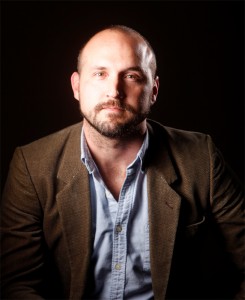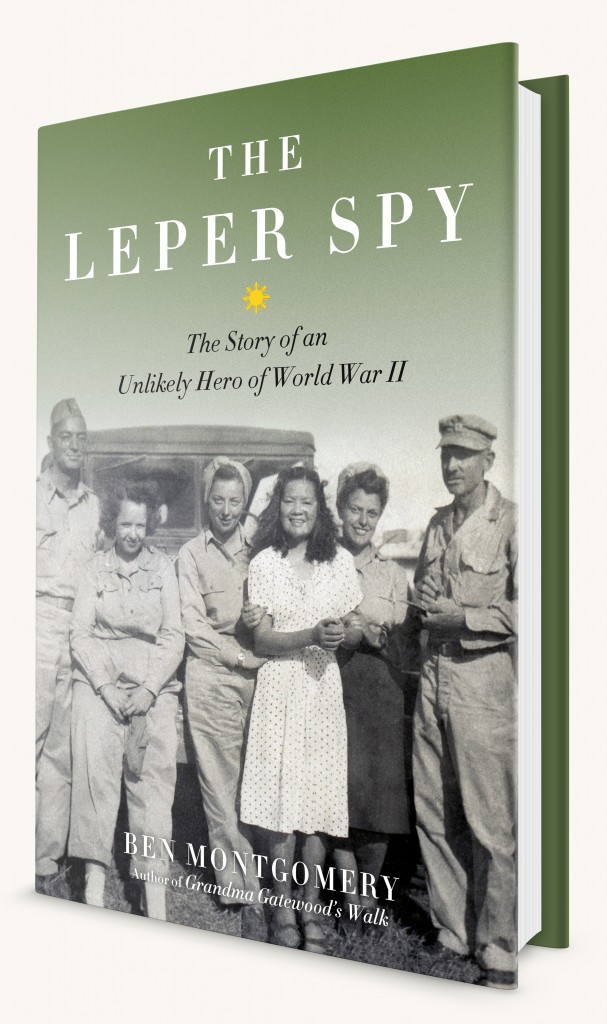 Ben Montgomery is the author of the New York Times bestseller Grandma Gatewood’s Walk and the forthcoming The Leper Spy: The Story of an Unlikely Hero of World War II (October 1), which reveals the nearly lost-to-history accomplishments of Josefina Guerrero, a Filipina spy who undertook daring missions for the US—and had leprosy. Here he discusses his research process, his own trip to the Philippines, and why he’s written two books about badass women.
Ben Montgomery is the author of the New York Times bestseller Grandma Gatewood’s Walk and the forthcoming The Leper Spy: The Story of an Unlikely Hero of World War II (October 1), which reveals the nearly lost-to-history accomplishments of Josefina Guerrero, a Filipina spy who undertook daring missions for the US—and had leprosy. Here he discusses his research process, his own trip to the Philippines, and why he’s written two books about badass women.
How did you learn about Joey? What drew you to her story?
I was listening to an episode of an NPR program, The Story with Dick Gordon, which explored the fascinating history of the National Leprosarium in Carville, Louisiana. The reporter telling the story asked a longtime doctor there whether different cultures regard Hansen’s Disease (leprosy) in different ways. The doctor quickly told the story of a former patient, Josefina Guerrero, who was able to work as a spy for the US Army during WWII primarily because she had Hansen’s Disease. The Japanese soldiers who occupied Manila were horrified of contracting the disease, so Joey used that fear to her advantage.
I’m always on the prowl for good book ideas and so I raced to a computer to see what had been written about this Josefina Guerrero. There was surprisingly little. She had sort of been forgotten. I found a profile of her in Time magazine from the 1950s about her fight to get to the United States. The story drew more than 4,000 letters to the editor. She was a big deal, a cause célèbre. But then she just disappeared. It struck me as a mystery worth exploring.
What sorts of daring ventures did Joey undertake?
The Japanese soldiers were ruthless during the war and some say as many as 900,000 Filipino civilians were killed. So the spy work being done by the underground resistance was incredibly dangerous. Joey was asked to map Japanese gun emplacements along Manila Bay and this meant walking around the city taking notes and drawing maps so Gen. Douglas MacArthur knew where to drop bombs. She carried these maps and messages hidden in her hair or under her bandages. She also stored in her home explosives the resistance used to blow up Japanese munitions and ships.
The most daring mission came in 1944 as the army raced toward Manila to save Allied prisoners of war and civilian internees. The underground learned that the Japanese had sown land mines in a field that would be a likely entry point to Manila for the advancing Americans. They needed someone to deliver a map to the US troops to save them from slaughter. Joey volunteered. She taped the map to her back and set off on foot through enemy territory. She walked some 35 miles, was nearly seized by pirates on the Pampanga River, and finally reached the American outpost. For this she is credited with saving the lives of hundreds of soldiers.
How did you research The Leper Spy? Were there any particularly helpful resources or individuals?
I started my research at the National Hansen’s Disease Museum in Carville, Louisiana, where the curator, Elizabeth Schexnyder, has done a downright incredible job of collecting and preserving records. I shared my project with her and she was helpful in tracking down resources. I spent a week working there in Carville. Ms. Schexnyder even connected me with Joey’s nephew, who then put me in touch with Joey’s daughter, Cynthia, who lives outside Manila.
I knew a trip to the Philippine Islands was in order, but I knew nothing about what I might find in the various archives there. My Filipino American friend, the author Alex Tizon, put me in touch with folks at the Philippine Center for Investigative Journalism. They set us up with a driver and helped me understand which archives in Manila would hold old newspaper microfilm and government records. Then it was just a matter of spending hours staring at microfilm until I found stories about Joey.
I’ve heard that WWII is the most written about event in human history, so there are hundreds of books about the war in the Pacific. I tried to read them all. Maybe the best was William Manchester’s massive biography of MacArthur, American Caesar. But there were also obscure sources, like self-published biographies from Jesuit priests, that helped me round out characters to help put Joey’s life in context. I also hired a researcher to dig through the guerrilla records at the National Archives in College Park, Maryland.
One very important piece of the puzzle fell into place at the last minute. Just before my deadline, I got Joey’s probate file from superior court in Washington, DC. The woman who handled Joey’s affairs upon her death in 1996 had done a remarkable job of documenting what Joey had left behind. That helped fill in what Joey’s final years were like, after she disappeared from the public eye.
How did visiting the Philippines affect how you wrote about the country and shaped the story?
My nine-year-old daughter accompanied me to Manila to help with the research. We both fell in love with the city and the people, who were friendly and welcoming. We did research at the National Archives there and at the University of Santo Tomas and at Intramuros, the old walled city. We tried to retrace Joey’s route on her daring walk I mentioned above. That included a ride in a banca on the Pampanga River. We interviewed Cynthia Guerrero, Joey’s daughter. We visited the leprosy hospital at Tala, where Joey was sent after the war.
We also took a side trip to an area of Manila called Tondo, which is essentially a living landfill. The poverty was hard to witness. Children dig through the trash to find anything of value, including discarded fast food, which is recooked and sold. Good people from a charity called Project Pearls gave us a tour and we met many of the locals who live inside the giant trash dump. It was a life-changing experience.
Were you previously familiar with WWII history or the Philippines?
I knew a little about the war in the Pacific, mainly because my grandfather had flown important bombing missions over Japan. That part of the war was always very real to me, but I knew nothing about the importance of the Philippines and MacArthur’s history there and the spirit of the Filipino people. I had no idea, for instance, that the Philippines were American territory for 40 years, the final outpost of Western expansion, and that many citizens were endeared to MacArthur. I was fascinated to learn about the Japanese occupation and the underground resistance and what life was like for the American internees at Santo Tomas and the other internment camps. I think we sometimes overlook the fact that next to Warsaw, Manila was the most devastated city during WWII.
 What do you think about Entertainment Weekly suggesting that “Forgotten female spies will finally get their day“? What has inspired you to highlight women’s accomplishments in both of your books?
What do you think about Entertainment Weekly suggesting that “Forgotten female spies will finally get their day“? What has inspired you to highlight women’s accomplishments in both of your books?
Goodness, I hope EW is right. We’ve certainly done a good job lionizing heroic men over the years, but there are amazing forgotten stories out there about women like Joey. I’m pleased as punch to try to revive them so we can acknowledge their roles in shaping American history.
I’m drawn to these stories because of the influence women have had on me. I remember my grandmother telling stories about working as an aircraft mechanic during WWII (she was small enough to fit inside the turbine), so I’ve got a blood connection to the spirit of Rosie the Riveter. My mother raised three boys while often working three jobs, then opened her own small business, a heroic effort. My wife is a badass in every respect, balancing mothering our three kids with her work doing security-clearance background investigations for the Department of Defense. And I like the idea that I can help highlight strong women who will inspire my two daughters and other young women like them.
Is there anything else you’d like to share?
It might sound silly, but it takes a village to raise a book. The writing process itself is a very personal experience, but every other aspect—the thinking and reporting and editing and selling—involves many friends and family. I’m forever in their debt. They know who they are.
The Leper Spy: The Story of an Unlikely Hero of World War II officially publishes October 1, 2016 and is available wherever books and e-books are sold.
“Montgomery offers a fascinating tribute to the slight Filipina who courageously saved thousands and chose anonymity.” —Booklist Online
[Get it now $27 ] [Request a review copy]
No Comments
No comments yet.